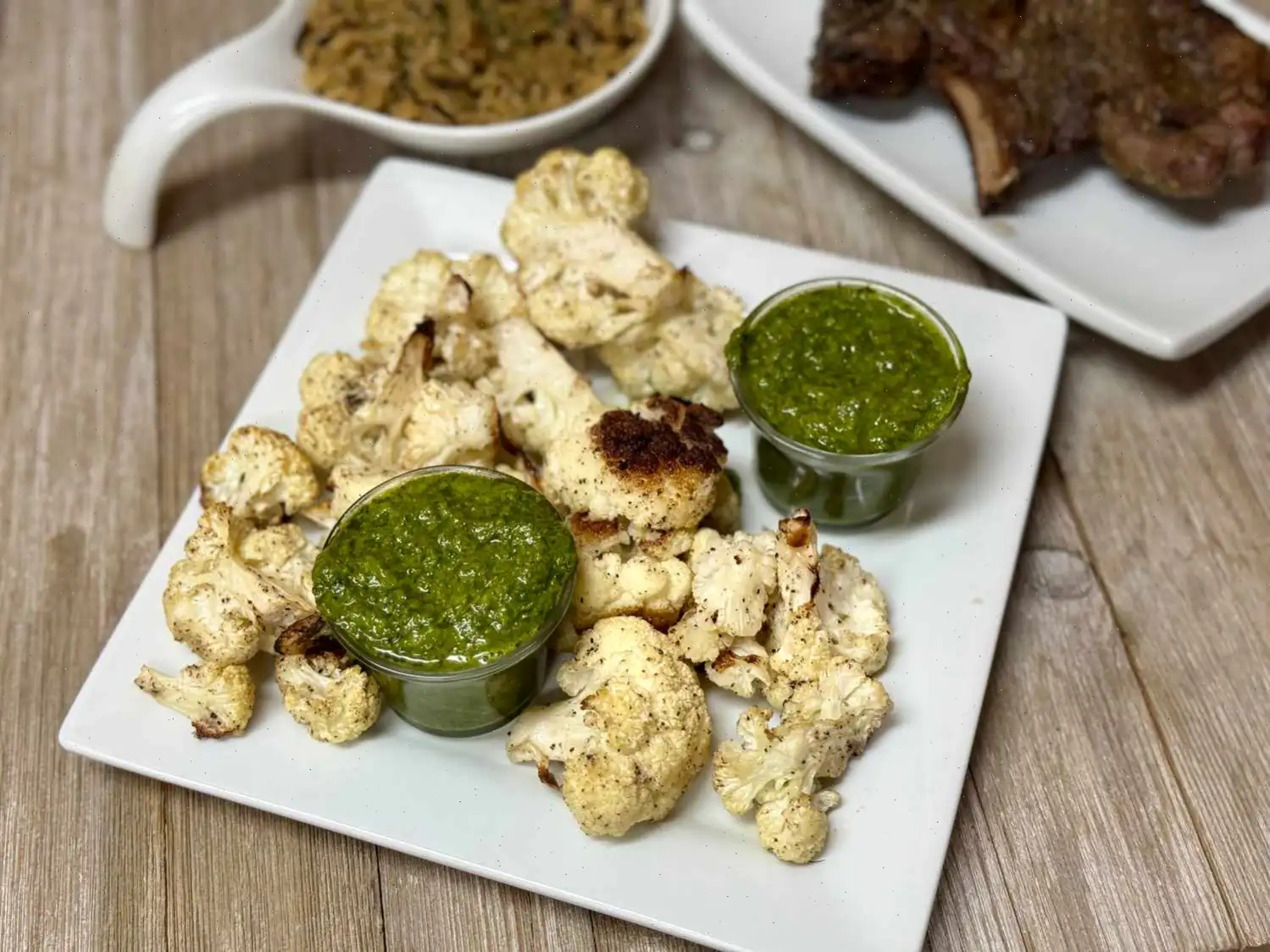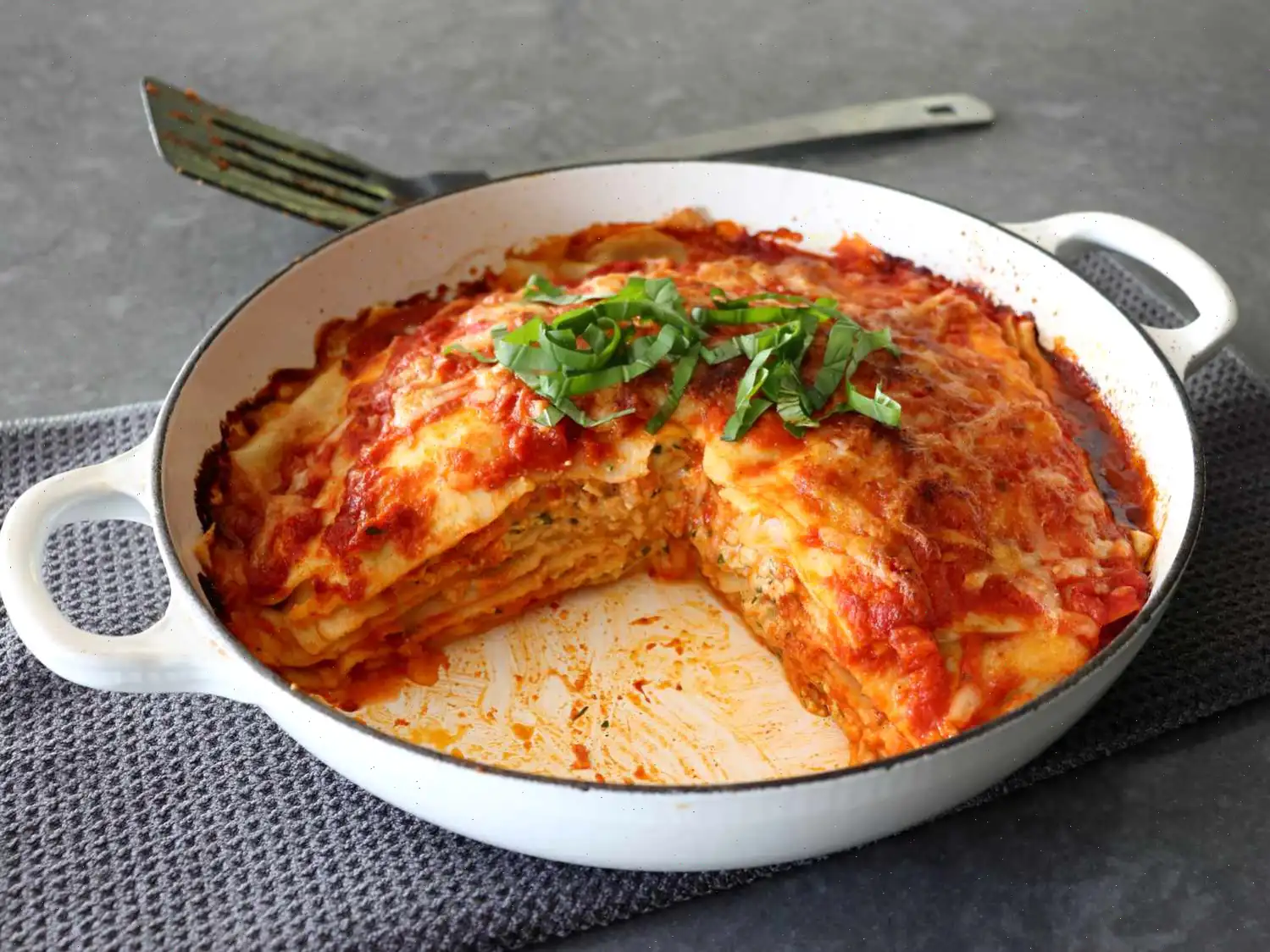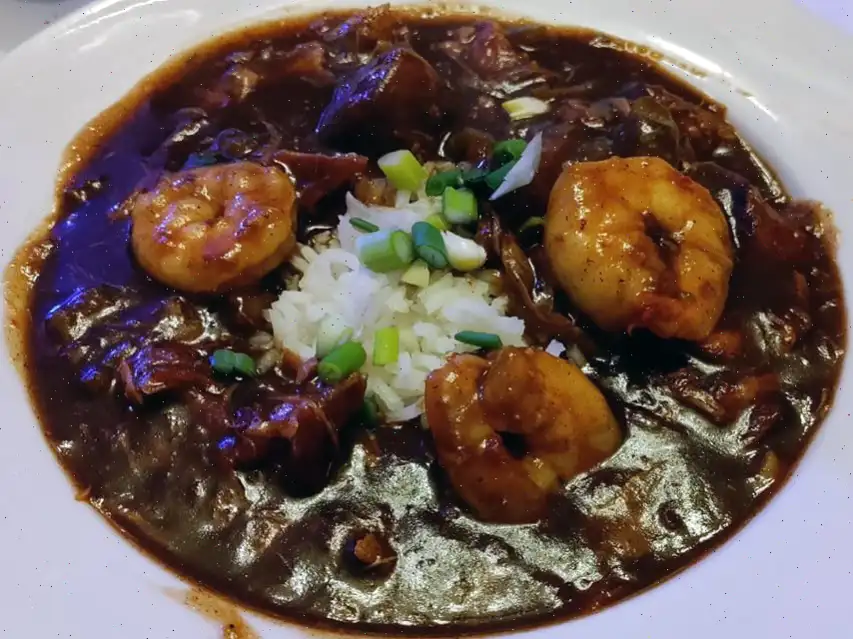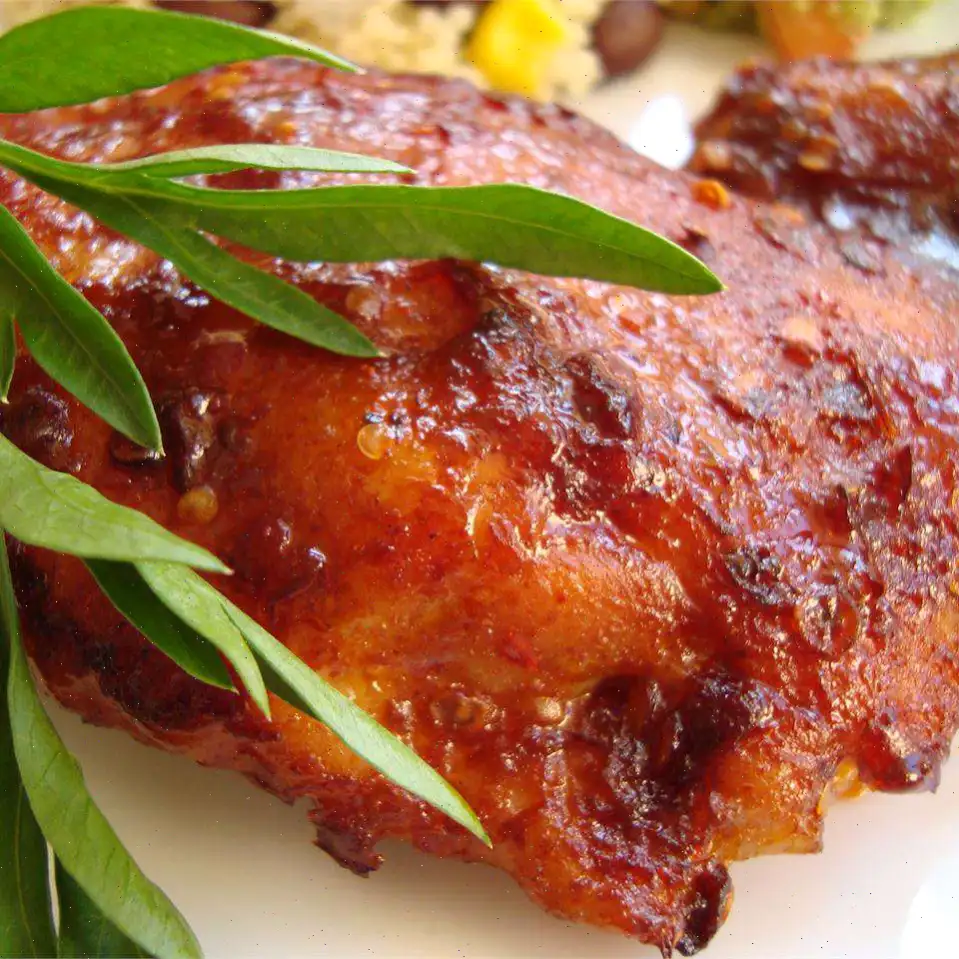
Zhug Cauliflower Recipe
Ingredients
- 1 small bunch flat leaf parsley, stems discarded
- 1 small bunch cilantro, stems discarded
- 2 serrano peppers, seeded and chopped
- 2 cloves garlic
- 1/3 cup extra-virgin olive oil
- 1 tablespoon lemon juice
- 1/2 teaspoon ground cumin
- 1 (2 pound) head cauliflower, cut into florets
- 1 tablespoon olive oil
- 1/4 teaspoon salt
- 1/8 teaspoon freshly ground black pepper
Directions
- In a blender, combine the parsley, cilantro, serrano peppers, garlic, 1/3 cup of olive oil, lemon juice, and cumin. Pulse until the mixture is smooth. Set the sauce aside.
- Preheat the oven to 400F (200C). Line a large baking sheet with foil.
- Place the cauliflower florets in a large bowl. Add 1 tablespoon of olive oil, salt, and pepper. Toss the ingredients together until the cauliflower is evenly coated.
- Spread the seasoned cauliflower in a single layer on the prepared baking sheet.
- Roast the cauliflower in the preheated oven for about 25 to 30 minutes, or until tender with a slight bite.
- Once the cauliflower is done, divide it onto plates and serve with the zhug sauce for dipping.
Nutrition Facts (per serving)
| Nutrition | Amount | % Daily Value |
|---|---|---|
| Calories | 166 | |
| Total Fat | 15g | 19% |
| Saturated Fat | 2g | 10% |
| Cholesterol | 0mg | 0% |
| Sodium | 115mg | 5% |
| Total Carbohydrate | 8g | 3% |
| Dietary Fiber | 4g | 14% |
| Total Sugars | 3g | |
| Protein | 3g | 6% |
| Vitamin C | 74mg | 82% |
| Calcium | 38mg | 3% |
| Iron | 1mg | 6% |
| Potassium | 267mg | 6% |
* Percent Daily Values are based on a 2,000 calorie diet. Your daily values may be higher or lower depending on your calorie needs.

History of Zhug Cauliflower
Zhug cauliflower is a modern twist on a traditional Yemeni dish that incorporates the vibrant, spicy flavors of the Middle East. The sauce, known as zhug, originates from Yemen and is typically used as a condiment to accompany meats, vegetables, and even bread. The dish itself is a fusion of roasted cauliflower and this zesty, herby sauce, which elevates the simple vegetable with bold flavors. The creation of zhug is attributed to Yemeni kitchens, but the dish has spread throughout the Levant and the Arabian Peninsula, where it has been embraced in various forms.
Regional Variations
Zhug cauliflower is part of a broader tradition of Middle Eastern and North African cuisine, where roasted vegetables are paired with spicy, aromatic condiments. In Yemen, zhug sauce can be made with various herbs like cilantro and parsley, mixed with hot peppers and garlic. In some regions, it may be blended with other spices like coriander or turmeric to suit local tastes. In places like Israel and Lebanon, roasted cauliflower is a popular dish, and zhug is often used as a dip or a topping to enhance the flavors. This dish is a testament to the diversity of Middle Eastern culinary traditions, each region putting its own unique spin on the combination of roasted vegetables and vibrant sauces.
Distinctions from Similar Dishes
What sets zhug cauliflower apart from similar roasted vegetable dishes is the use of zhug sauce itself. Unlike many roasted vegetable recipes that rely on olive oil, salt, and pepper, zhug adds a complex mix of herbs and spices, including the heat from serrano peppers and the earthiness of cumin. The result is a dish that has an intense flavor profilespicy, fresh, and tangymaking it stand out in contrast to more straightforward vegetable roasts. Additionally, the choice of cauliflower as the vegetable is significant; while roasted cauliflower is a staple in many cuisines, its pairing with a punchy sauce like zhug is somewhat unique.
Where It Is Typically Served
Zhug cauliflower is commonly served as a side dish in Middle Eastern and Levantine meals, often accompanying grilled meats like lamb, chicken, or beef. It can also be served as part of a mezze platter alongside other dips like hummus, baba ghanoush, or muhammara. In Yemen, zhug is a traditional accompaniment to dishes like kebabs and rice, and its spicy kick pairs wonderfully with the rich flavors of roasted meats. In contemporary settings, zhug cauliflower has become a popular dish in modern Middle Eastern restaurants, especially those focusing on vegetarian or plant-based menus. Its versatility also allows it to be served as a main dish in vegetarian meals.
Interesting Facts
- Zhug is sometimes referred to as "Yemeni hot sauce," and it's known for its bold, fiery kick.
- The use of serrano peppers in the sauce gives it a fresh, clean heat, unlike the more intense, lingering heat of other chili peppers.
- Cauliflower has been a staple vegetable in the Middle East for centuries, particularly in regions like Syria and Lebanon, where it is often featured in stews and roasted dishes.
- The combination of herbs like cilantro and parsley with cumin in the zhug sauce reflects the common use of fresh herbs in Middle Eastern cuisine to brighten and balance out the rich flavors of meats and vegetables.
- Though originally a Yemeni recipe, zhug sauce has gained popularity in the United States and Europe, particularly in the growing trend of Middle Eastern and Mediterranean cuisine.








